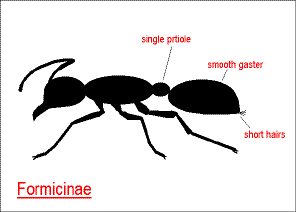Subfamily Formicinae - Spiny Ants, Sugar Ants

Formicines are generally active and fast moving. Most species will defend their nests vigorously, attacking intruders with their large mandibles and formic acid sprays. They possess poison glands, with which they spray or drip formic acid on their enemies to stun or kill them.
For the Formicinae ants the petiole is a single segment. The gaster is smooth and does not have constrictions between the segments. The tip of the gaster is absent of a sting.
- Golden Spiny Ant, Elegant spiny ant
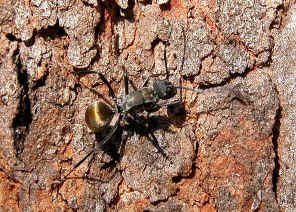
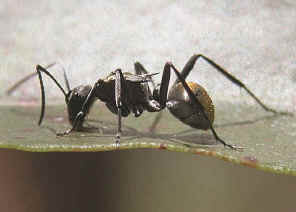
- Polyrhachis sp., subgenus Hagiomyrma, body length 10mm
- Those Ants have spines on the mesosoma and the top of the petiole. The first upper plate of the gaster elongate and comprising more than one-half the total length of the gaster. The ants are omnivorous and often found collect 'honey dew' from leafhopper and scale-insects. More information and pictures please find on this page.
- Rattle Ant, Black Weaver Ant


- Polyrhachis sp., subgenus Cyrtomyrma, body length 7mm
- The Golden Ants are shiny, black in colour, with body length about 7mm. Their legs and antenna are all black in colour. They are usually found wandering alone on plants leaves, looking for food. They build nests on trees. The Gold Ants build nests in board leave trees, dead trees and pine trees. When their nest is disturbed, a number of ants will come out and look for the intruder. To see how the inside of a Golden Ants nest look like, please click here.
- Large Rattle Ant


- Polyrhachis sp., subgenus Cyrtomyrma, body length 10mm
- This Large Rattle Ants are shiny, black in colour, and looks exactly same as the Golden Ants above except they are larger. They are also found wandering alone on plants leaves, looking for food. They build nest on tree. When their nest is disturbed, hundreds of ants will come out from the nest and look for the enemy. I took this picture near Lamington National Park. The nest was found on an orange tree, about one meter above ground.
- Very Large Black Ant
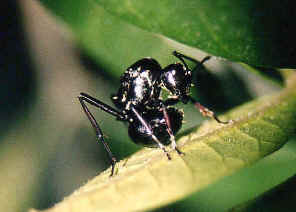
- ? Polyrhachis sp., body length 20mm
- We found this very large black ant wandering on leaves alone. When disturbed, it posted the attack posture to us.
- Strobe Ant, Electric Ant
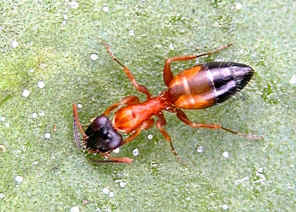
- Opisthopsis sp., body length 6mm
- Those ants run rapidly with short, jerky motions. They have large eyes on top edges of their head, with good vision. Their body is bright orange brown in colour with black.
- Black-headed Sugar Ant
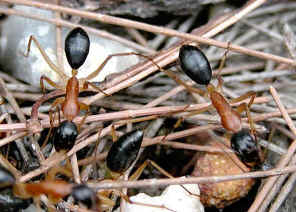
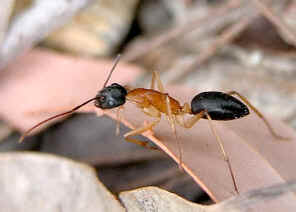
- Camponotus nigriceps, body length 10mm
- Camponotus species commonly called sugar ants. Sugar ants are stingless, although unable to sting, do possess strong mandibles which can bite. In self-defense these ants are also able to spray acid from their abdomens to deter predators. More information and pictures please click on here.
- Banded Sugar Ant, Nocturnal Sugar Ant
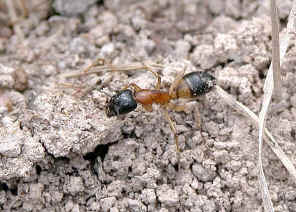
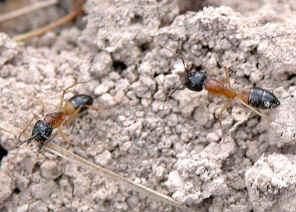
- Camponotus consobrinus, body length 10mm
- Banded Sugar Ant is probably the most familiar species of the Camponotus genus as they are a common sight in many suburban areas. As their name they likes sugar, but they are also attracted to any sweet food. They are omnivores and can be seen foraging on ground in bush as well as suburban area. More Pictures and information please visit this page.
- Golden Black Sugar Ant
-
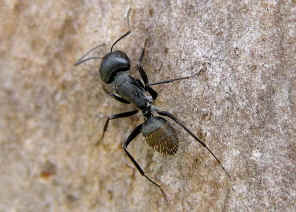
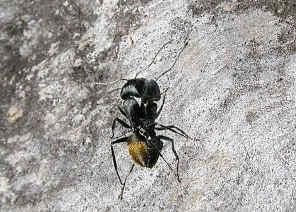
- Camponotus nigroaneus or Camponotus aeneopilosus, body length 10mm
- Brown Sugar Ant
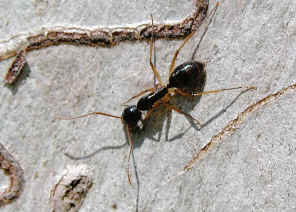
- Camponotus sp.,
Unidentified Ants in this subfamily.
- We cannot identified the following ants yet, although we believe they are in this subfamily. Please advise if you know what is those species. Thank you.
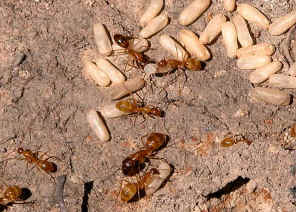
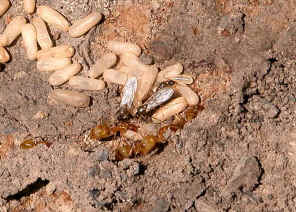
- ?sp., body length 5mm
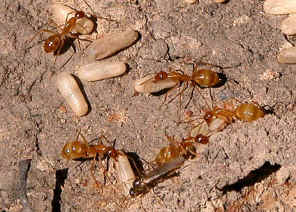
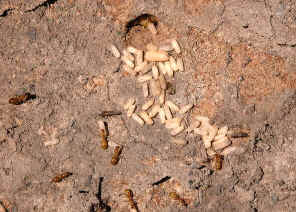
- Reference and Link:
- 1. Insects of Australia and New Zealand - R. J. Tillyard, Angus & Robertson, Ltd, Sydney, 1926, p290.
- 2. Polyrhachis (spiny ants) - myrmecos.net, 2005.
- 3. Opisthopsis (strobe ants) - myrmecos.net, 2005.
- 4. Australian Camponotus - myrmecos.net, 2005.
